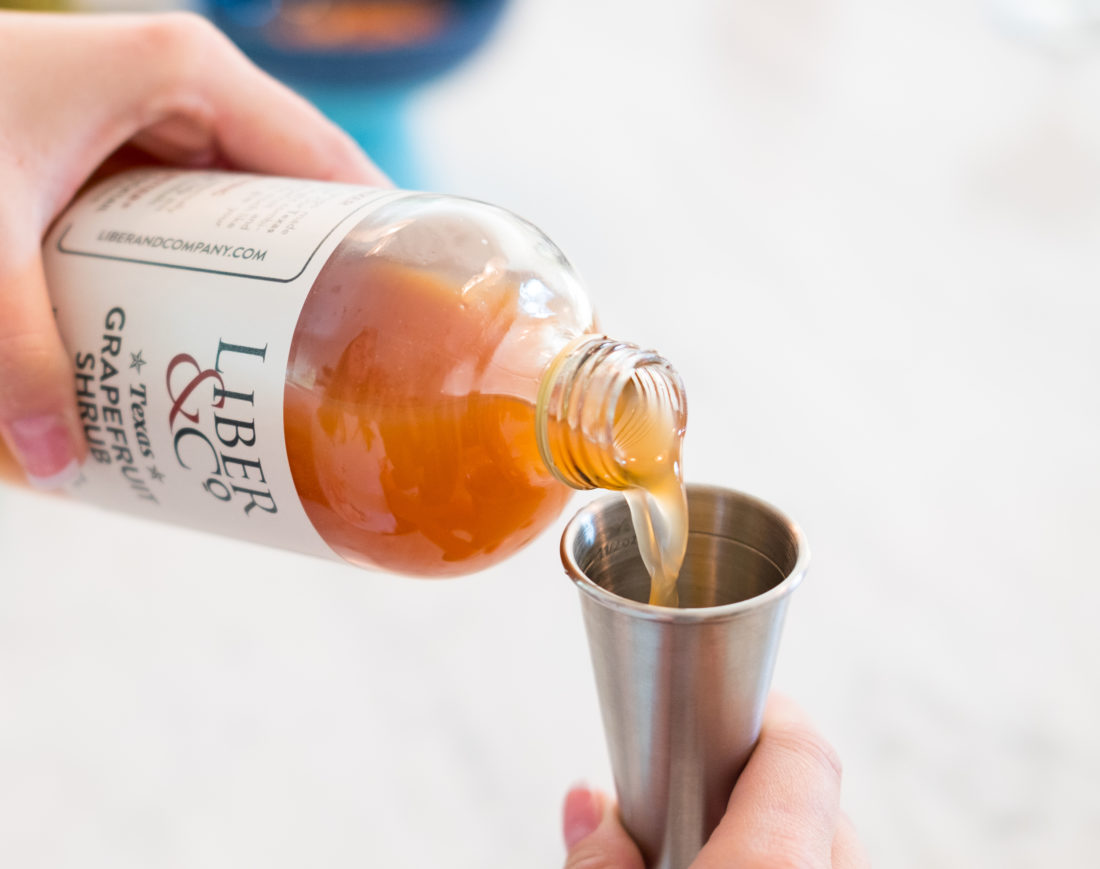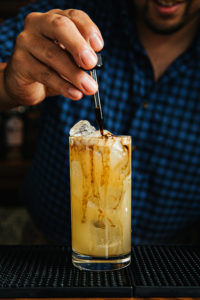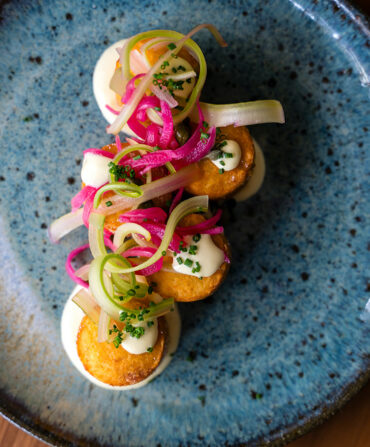The act of sipping vinegar dates back to the ancient Greeks and Romans, who called it posca, or poor man’s wine. It was an everyday essential as well, used to preserve foods in the days far before refrigeration. In England, the term shrubs arrived in the fifteenth century to describe potable, fruit-infused vinegars often given to sailors suffering from scurvy. By the nineteenth century, shrubs became common in cocktail recipe books.
Today, there are still devotees of drinking vinegar around the world, both those for whom it has sour-palate appeal and for those seeking its holistic properties, such as for gut health. But your trusty bottle of Heinz Apple Cider has nothing on today’s drinking vinegars, which temper the bracing vinegar with balancing notes of herbs and botanicals, sugar and spice. And while the majority today are made in the Midwest and New England, several top makers call the South home.
“Drinking vinegars are tart-tangy, historically enjoyed by farm workers to keep them hydrated and healthy on long days,” says Deborah Stone of Stone Hollow Farmstead in Harpersville, Alabama. “We’ve taken the concept and added a modern twist with benefits.” Her company, for instance, makes a Ginger Infused Apple Cider flavor and a Turmeric Infused, which won a Sofi Award from the Specialty Food Association in 2020. The recipes include savory notes, such as garlic, as well as cinnamon, star anise, and clove. The lemongrass, ginger, and turmeric Stone Hollow uses are grown right on the farmstead.
“Turmeric is said to improve brain function and reduce inflammation,” Stone says of the health benefits of the ingredients. “Ginger is traditionally known to aid in digestion. Drinking vinegar may also have a probiotic or prebiotic effect.”
But drinking vinegars are not merely a fad for internal ailments—they can aid in your follies too. In Austin, Texas, Liber & Co. crafts a full lineup of artisan bar syrups, and their Texas Grapefruit Shrub is a bestseller. “We use the iconic Rio Red Texas grapefruit,” says Liber’s COO and cofounder, Chris Harrison, “and add fine cane sugar and grapefruit oil, with Champagne vinegar and a little allspice. In my mind, when you see drinking vinegar or shrub on a label, these are things that have a connotation of being homegrown and local. We try to be as close to pure ingredients as possible.” The result is a beautiful addition to the classic cocktails you already enjoy—you might, say, substitute half of the lime juice in a daiquiri with the shrub, or use it to make a morning mimosa more tangy.
Proof that the pucker is here to stay, Horball’s launched an entire company based around the art of the drinking vinegars, in Raleigh, North Carolina. “Our product hit the market in early 2019,” says Rob Schmidt, the chief operating officer of Horball’s Inc. “The basic shrub recipe is so simple and honest: fruit, sugar, vinegar, a splash of herbs or spices—the way the shrub is prepared, including the time and hard work, is what separates an amazing shrub from a simple flavored vinegar.”
Horball’s started out with four flavors—blueberry-lemon, strawberry-mint, cucumber-mint, and peach-rosemary—and recently added two more: raspberry, and a spiced cherry balsamic called Liquid Freedom. Like the drinking vinegar from Stone Hollow, Liquid Freedom also leans on the common baking spices of clove, allspice, and cinnamon. A sip wakes you up, then eases you right into chilly temperatures and tailgate season (and you can also mix it into cocktails, such as Horball’s Sixth Borough).
“Drinking vinegars are very versatile,” Schmidt says. “You can use them any time of day (or season). Soda water and ice? Yes please. In a salad dressing for lunch? Absolutely. Dessert? Use it as an ice cream topper or mix a little into a cake mix or frosting for a flavor pop and beautiful color.”
Ready to mix up a shrub of your own? Here’s a recipe for a spiced pineapple shrub and a cocktail to try it in.









